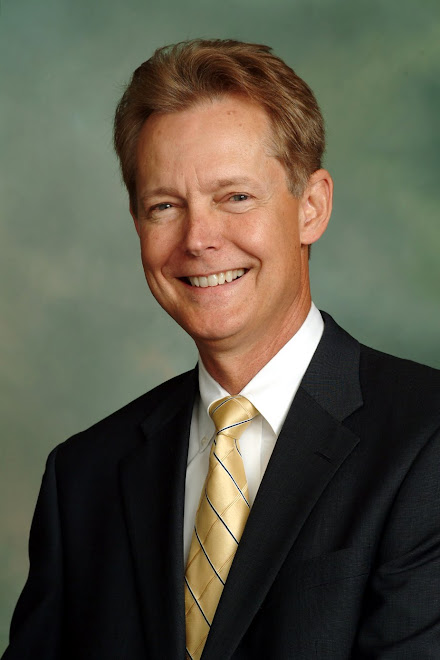Monday, December 20, 2010
Colleges Expand Being Social
Georgia State University, 6th largest business school in country, and Rollins Colleges, ranked 1 of 118 regional colleges in America's Best Colleges, have both launched supporting networks of industy CFO and Controllers in high level councils and forums. McCracken Alliance is advisor to both. Key is the growing need for nurturing ongoing interpersonal relationships beyond monetary support levels. As social media is teasing the establishment of online relationships, universities and even many high schools, are creatively designing ways to foster the in-person side of relationships which are proven to foster deeper and more long lasting beneficial relationships. The human touch and emotional quotient are still viewed as a highly important aspect of interpersonal relationships in business despite some tech-savvy companies encouraging online relationships which are confusing many users into thinking that their "friends" online are as potent as their interpersonal business relationships and the advantages that come from them. Only time will tell, but a sure bet is to play both sides of this field. (See One2World Solutions at One2World.com).
Thursday, October 14, 2010
If you want to see how the power of Social Media can influence major corporate decisions, and the resultant consideration of its impact on corporate human capital leadership development, just check out this Blog Post referenced below. I summarized a couple of salient points for convenience. While you read, think about how important it is to recognize that Web impressions are highly important to your own future sphere of influence. IS YOUR PERSONAL PROFESSIONAL BRAND UNDER YOUR CONTROL AND IS YOUR PERSONAL BRAND BEING COMMUNICATED WITH THE CONTENT YOU DESIRE? Sure GAP's image is influenced by millions, but although your personal sphere of influence is much smaller, the impact of your brand upon you is proportionately equal to or greater than the ultimate impact one user group has to GAPs overall performance. So, relative to you, your brand is even more vital to the achievement of future successes.
"Thursday, October 14, 2010
Today in Talent Development
by Mind the Gap
BLOG: Author: Katie Ratkiewicz
http://www.gap.com/
By now you must have heard about the Gap’s failed rebranding effort, the overwhelmingly negative response from the online community, and then their eventual retraction and reversal back to their original logo – all within one week!
If the Gap had only involved the online community and customer base prior to releasing a drastic branding shift, perhaps it could have avoided this whole fiasco....The disconnect between the organization’s goals, the consumer perceptions, and the techniques to move the organization into the future – are important ones to consider.
So what does all of this have to do with human capital and talent development? A lot actually. In any major corporate rebranding effort, the CEO down to every individual contributor should be leading the charge across the organization to actively involve consumers and maintain a tight connection to them — this needs to be ingrained into the fabric of the corporate culture, so as not to have another misstep like this again. From the moment a new employee comes onboard the organizational values should be communicated clearly so that each and every member of the organization understands the importance of understanding the customer, and his/her overall preferences."
"Thursday, October 14, 2010
Today in Talent Development
by Mind the Gap
BLOG: Author: Katie Ratkiewicz
http://www.gap.com/
By now you must have heard about the Gap’s failed rebranding effort, the overwhelmingly negative response from the online community, and then their eventual retraction and reversal back to their original logo – all within one week!
If the Gap had only involved the online community and customer base prior to releasing a drastic branding shift, perhaps it could have avoided this whole fiasco....The disconnect between the organization’s goals, the consumer perceptions, and the techniques to move the organization into the future – are important ones to consider.
So what does all of this have to do with human capital and talent development? A lot actually. In any major corporate rebranding effort, the CEO down to every individual contributor should be leading the charge across the organization to actively involve consumers and maintain a tight connection to them — this needs to be ingrained into the fabric of the corporate culture, so as not to have another misstep like this again. From the moment a new employee comes onboard the organizational values should be communicated clearly so that each and every member of the organization understands the importance of understanding the customer, and his/her overall preferences."
Tuesday, October 5, 2010
The Next 5 Years in Social Media
Imagine the impact on employees who desire to brand themselves internally at their employer!
The Next 5 Years in Social Media
The Next 5 Years in Social Media
Sunday, October 3, 2010
Wednesday, July 7, 2010
Building Brand Through People
Companies are continuing to realize that their human capital assets, their people, are their most valuable assets. Managing this asset most effectively can not only create a more productive and attractive company culture, but it can also build company loyalty among high potential employees and a company's future leaders. Social Media is becoming integral to this process, and if used effectively, can compliment the brand of both the employee and the company, plus it can be integrated into the company's performance measurement systems. As we continue to study this emerging phenomenon, we are looking for examples of how this is beign implemented in practice and how it is being measured.
Subscribe to:
Posts (Atom)

